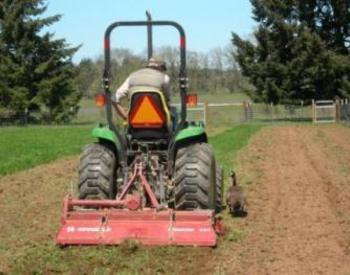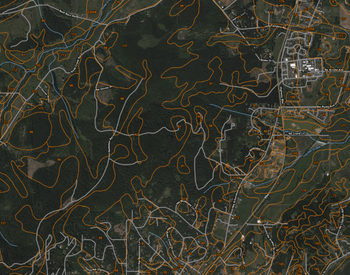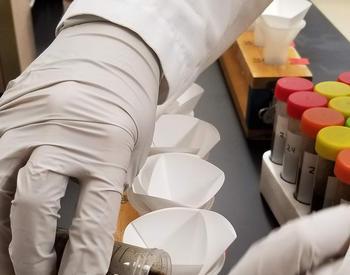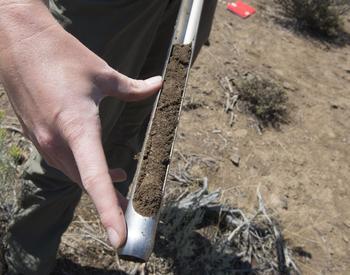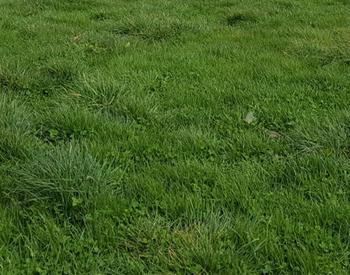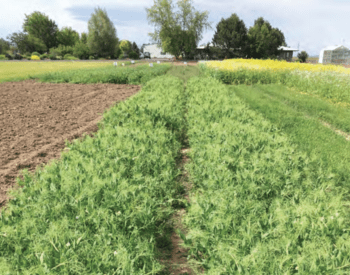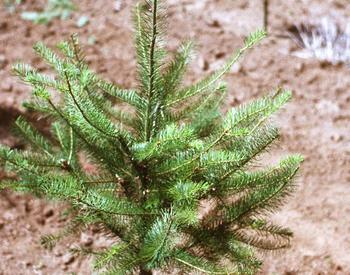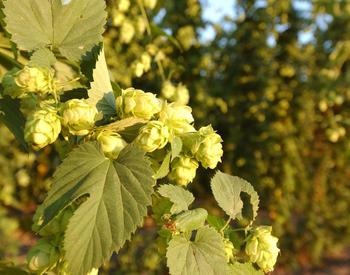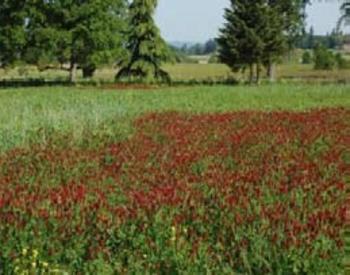Transcript
Welcome to living on the land, an award-winning source of useful information brought to you by your Oregon State University Extension Service.
What makes soil productive for plants? Sure, there needs to be nutrients, water and access to sunlight. But pH also strongly affects the state of your soil and your plants ability to grow. So join with. Me today, along with research from the OS Extension Service to understand what soil. Which is what causes it to change and how to manage it. So what is soil pH? Well, it's a measure of how acid or alkaline, the mixture of soil and groundwater is. It affects a large range of soil functions, such as how available nutrients are, how effective pesticides are, whether legumes can fix soil nitrogen, how susceptible plants are to disease, how toxic aluminum becomes to roots, and even the activity levels of soil organisms. The pH scale itself ranges from zero to 14. Now, unlike most scales that start at 0 and neutral pH is right in the middle of the range at A7. A pH below 7 is acidic and a pH above 7 is alkaline, which is also sometimes referred to as basic. The important thing to remember here is that the further away the pH is from A7, the stronger the acid or alkali becomes. The pH scale can be a little confusing because of its logarithmic nature, which is similar to the Richter scale used to measure earthquake magnitudes. Logarithmic means that each number is 10 times more or less than its neighboring numbers. So, for example, a pH of five is 10 times more acidic than a pH of 6. Most plants prefer a slightly acidic soil in the range of six to seven, but each plant has its own ideal range. Native soil pH depends on the rocks from which the soil was originally formed. Higher pH soil comes from rock like basalt that's high in basic or alkaline cations. Lower pH soil comes from rock that is high in acidic cations like granite. Now overtime a soil's pH tends to decrease through a process known as acidification, and it can be driven by a number of factors. One way is through a plant's absorption of alkaline nutrients, like calcium, magnesium, potassium and sodium. It also happens as water leeches, nitrates from the soil as it dry. Ends when the weathering of minerals releases their acidifying components. When organic matter decomposes, when plants release hydrogen ions through their roots, and when ammonium nitrate fertilizers are converted to nitrate. Those are a lot of processes that can make your soil more acidic. A complicating factor in all of this is that soil usually doesn't have the same pH at all depths. Those changes in soil pH from one depth to another is called stratification, a common cause of soil stratification is repeated applications of fertilizer that cause the soil to become more acidic down to the depth of its application. Soil can also have patches of different pH levels. If erosion has removed topsoil and expose the underlying layer. Tilling the soil can mix together these stratified layers down to the tillage depth. But redistributing the pH this way only delays the need for correction, because it doesn't actually neutralize the acidity and it doesn't address the causes of acidification. Before the next episode where we explore some long term strategies for managing soil pH, you should understand that it's not hard to measure your soils pH and taking actual measurements is imperative here. Folks under applying amendments won't do you much good and over applying them will create new problems. Fortunately, measuring your soils pH is pretty straightforward. Meters and testing kits can be found online and at most garden supply stores. The best practice is to take soil samples before and after each growing season and to keep a log of those measurements. Now, if this seems overwhelming, if you have too many samples to test yourself, or if you need verified accuracy, then consider sending your soil samples to a qualified laborer. The OSU Extension Service can help you find a qualified laboratory in our online catalog at catalog.extension.oregonstate.edu and by searching for analytical laboratories serving Oregon. You can also look it up in the catalog as publication number EM8677. If you want to test the soil pH yourself, see our publication titled A Guide to collecting soil samples for farms and gardens. You can also find that as publication #EC628. As always, your local OSU extension office is a wonderful resource and our master gardener program can provide assistance with soil, testing and consultation. I hope you'll stay tuned for Part 2, which goes over the tactics for managing your soils pH. Until next time we'll be living on the land.
In this episode of "Living on the Land" by the Oregon State University Extension Service, the focus is on understanding soil pH and its impact on plant growth. The episode explains the pH scale, the factors influencing soil pH changes, and introduces the concept of soil stratification. Viewers are encouraged to measure their soil's pH using meters or testing kits and to stay tuned for Part 2, which will explore strategies for managing soil pH. The importance of accurate measurements and available resources, such as qualified laboratories and the OSU Extension Service, is highlighted for effective soil management.
This is from the Living on the Land series. Download the related PDF - Living on The Land: Managing Soil pH
The phrase “Living on The Land” is used with permission from Living on The Land Stewardship for Small Acreage, © 2008, UNCE/WSARE.

